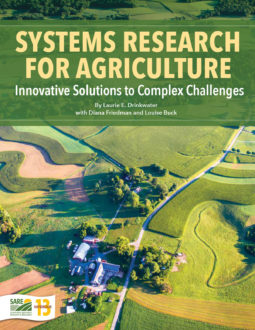Analysis of Ecological Communities. 2002. McCune, B., J.B. Grace, and D.L. Urban. MjM Software Design.
Applied Multivariate Statistical Analysis. 2002. Johnson, R.A., and D.W. Wichern. Prentice-Hall, Inc: Upper Saddle River, NJ.
Assessment of sampling stability in ecological applications of discriminant analysis. 1988. Williams, B.K., and K. Titus. Ecology 69: 1275–1285.
Canonical community ordination. Part I: Basic theory and linear methods. 1994. ter Braak, C.J.F. Ecoscience 1: 127–140.
Canonical correspondence analysis and related multivariate methods in aquatic ecology. 1995. ter Braak, C.J.F. Aquatic Sciences 57: 255–328.
Canonical correspondence analysis: a new eigenvector technique for multivariate direct gradient analysis. 1986. ter Braak, C.J.F. Ecology 67: 1167–1179.
Contingency-Table Analysis of Rain-Forest Vegetation. 1971. Hatheway, H.W. In Statistical Ecology. Vol. 3, eds. G.P. Patil, E.C. Pielou, and W.E. Waters. pp. 271–313. Pennsylvania State University Press: University Park, PA.
Detrended correspondence analysis: an improved ordination technique. 1980. Hill, M.O., and H.G. Gauch. Vegetation 42: 47–58.
Handbook of Ecological Indicators for Assessment of Ecosystem Health. 2nd Edition. 2009. Jørgensen, S., L. Xu, and R. Costanza, eds. Taylor & Francis, CRC Press: Boca Raton, FL.
Multivariate Analysis in Community Ecology. 1982. Gauch, H.G. Cambridge University Press: Cambridge, UK. A very well-written and easy to read text. Great introduction into multivariate methods in community ecology. Provides purposes of the described analyses, and examples and criteria for evaluation of the method.
Multivariate analysis in ecology and systematics: panacea or Pandora’s box. 1990. James, F.C., and C.E. McCulloch. Annual Review of Ecology and Systematics 21: 129–166. Excellent overview of some of the pitfalls of using multivariate methods inappropriately.
Multivariate Analysis of Ecological Data using CANOCO. 2003. Leps, J., and P. Smilauer. Cambridge University Press: Cambridge, UK.
Multivariate Analysis (Probability and Mathematical Statistics). 1980. Marida, K., J.T. Kent, and S. Holmes. Academic Press: San Diego, CA.
Multivariate Statistical Methods: A Primer, Third Edition. 2004. Manly, B.F.J. Chapman and Hall/CRC Press: Boca Raton, FL. Helpful resource for those who have limited or no experience with multivariate statistics.
Multivariate Statistics for Wildlife and Ecology Research. 2002. McGarigal, K., S.A. Cushman, and S. Stafford. Springer-Verlag: New York, NY. Helpful resource for those who have limited or no experience with multivariate statistics.
Non-parametric multivariate analyses of changes in community structure. 1993. Clarke, K.R. Australian Journal of Ecology 18: 117–143.
An ordination of the upland forest communities in southern Wisconsin. 1957. Bray, J.R., and J.T. Curtis. Ecological Monographs 27: 325–349.
Principal Component Analysis, 2nd ed. 2002. Jolliffe, I.T. Springer-Verlag: New York, NY.
Putting things in even better order: the advantages of canonical correspondence analysis. 1993. Palmer, M.W. Ecology 74: 2215–2230. Reciprocal averaging: an eigenvector method of ordination. 1973. Hill, M.O. Journal of Ecology 61: 237–249.
Statistical Analysis of Regional Yield Trials: AMMI Analysis of Factorial Designs. 1992. Gauch, H.G. Elsevier Science Publishers: Amsterdam. Thorough and authoritative text on the AMMI model.
